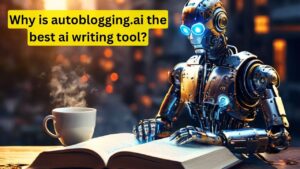Artificial Intelligence (AI) is the simulation of human intelligence in machines that are programmed to think, learn, and adapt. The idea of AI has evolved over centuries, from philosophical musings to sophisticated algorithms that now influence nearly every aspect of modern life. This article explores the intricate history of AI, its definitions, and how it has evolved to become a central technology in our world today.
1. Definitions of Artificial Intelligence
AI is broadly defined as the ability of a digital computer or computer-controlled robot to perform tasks commonly associated with intelligent beings. The essence of AI is to create machines that can mimic cognitive functions such as learning, reasoning, and problem-solving.
Types of AI:
- Weak AI: Also known as narrow AI, this type is designed to perform a narrow task (e.g., facial recognition, internet searches). Most of the AI we interact with today falls into this category.
- Strong AI: This refers to systems that possess the ability to perform any intellectual task that a human can do. Strong AI is still theoretical and not yet realized.
2. Early Philosophical Foundations
The concept of AI can be traced back to ancient philosophers who dreamed of creating artificial beings with intelligence. Aristotle’s work on logic laid the groundwork for formalizing reasoning processes, which are crucial for AI development.
In the Middle Ages, automata like the “talking heads” and the golems of Jewish folklore hinted at a future where humans could create life-like machines. The Enlightenment brought further advancements, with thinkers like René Descartes speculating about the mechanization of human thought.
3. The Birth of Modern AI (1940s-1950s)
The modern era of AI began in the mid-20th century with the advent of digital computers. Two key figures, Warren McCulloch and Walter Pitts, published a paper in 1943 that laid the foundation for neural networks, which are critical to modern AI.
In 1950, Alan Turing introduced the concept of a machine that could think, famously proposing the “Turing Test” to determine a machine’s ability to exhibit intelligent behavior indistinguishable from that of a human.
The field of AI as a distinct discipline was born in 1956 at the Dartmouth Summer Research Project, where John McCarthy coined the term “artificial intelligence.” This marked the beginning of AI as a field of scientific inquiry, with ambitious goals of creating machines that could perform human-like tasks.
4. The Evolution of AI: 1960s to 1980s
The Early Years (1960s-1970s): The 1960s saw the development of the first AI programs, such as ELIZA, a rudimentary chatbot created by Joseph Weizenbaum. This period also saw the creation of expert systems like DENDRAL, which could perform specific tasks within a narrow domain.
The AI Winter (1980s): Despite early successes, AI faced significant challenges in the 1980s. The limitations of existing technology, coupled with overly ambitious promises, led to a period known as the “AI Winter,” where funding and interest in AI research declined.
5. Revival and Breakthroughs: 1990s to 2010s
The 1990s Revival: AI experienced a resurgence in the 1990s with the development of more sophisticated algorithms and the increasing power of computers. Notable milestones included IBM’s Deep Blue defeating world chess champion Garry Kasparov in 1997, showcasing AI’s potential in complex problem-solving.
The Deep Learning Revolution (2010s): The 2010s marked a significant turning point with the rise of deep learning, a subset of machine learning inspired by the structure of the human brain. Breakthroughs in neural networks, particularly through the backpropagation algorithm, allowed machines to learn from vast amounts of data. This period also saw the development of Generative Adversarial Networks (GANs) and the introduction of AI systems like IBM Watson, which won the game show Jeopardy! in 2011.
6. The Rise of Generative AI and Transformer Models (2020s)
In the 2020s, AI has reached new heights with the development of transformer-based models. The introduction of models like GPT-3 and its successors has revolutionized natural language processing, enabling machines to generate human-like text and engage in more sophisticated conversations.
Generative AI has also made significant strides, with models like OpenAI’s DALL-E creating images from text descriptions and CLIP understanding the relationship between images and text. These advancements highlight the growing intersection of AI with creative fields, opening up new possibilities for human-computer interaction.
7. The Future of AI
The future of AI holds immense promise, with potential applications spanning healthcare, finance, education, and beyond. However, the rapid advancement of AI also raises important ethical questions. Issues such as bias in AI, data privacy, and the impact of AI on jobs are critical concerns that society must address.
As AI continues to evolve, it will undoubtedly reshape our world in ways we can only begin to imagine. From self-driving cars to personalized medicine, the possibilities are endless, but so are the challenges.
FAQs
- What is the difference between AI, machine learning, and deep learning?
- AI is the broader concept of machines being able to carry out tasks in a way that we would consider “smart.” Machine learning is a subset of AI that involves training algorithms to learn from and make predictions based on data. Deep learning is a further subset of machine learning that uses neural networks to analyze various factors of data.
- What are some real-world applications of AI?
- AI is used in numerous applications today, including virtual assistants like Siri and Alexa, recommendation systems like those used by Netflix and Amazon, autonomous vehicles, facial recognition systems, and in the healthcare industry for tasks such as diagnostic imaging and drug discovery.
- What are the ethical concerns surrounding AI?
- Key ethical concerns include the potential for bias in AI systems, data privacy issues, the displacement of jobs due to automation, and the need for transparency in AI decision-making processes.
AI’s journey from a philosophical idea to a transformative technology is a testament to human ingenuity and the relentless pursuit of progress. As we continue to innovate, it is crucial to consider the broader implications of AI on society and work towards solutions that maximize its benefits while minimizing its risks.





